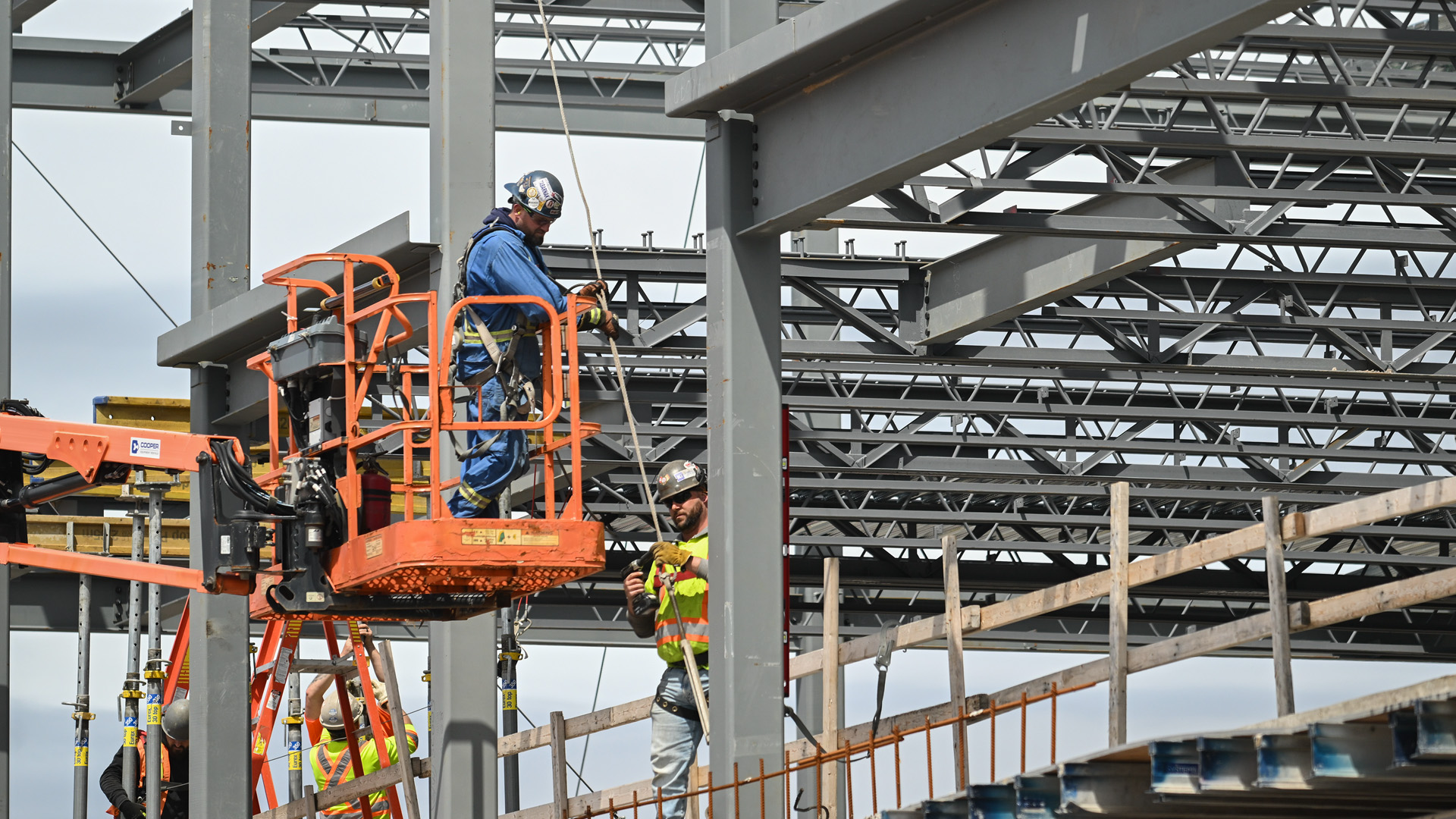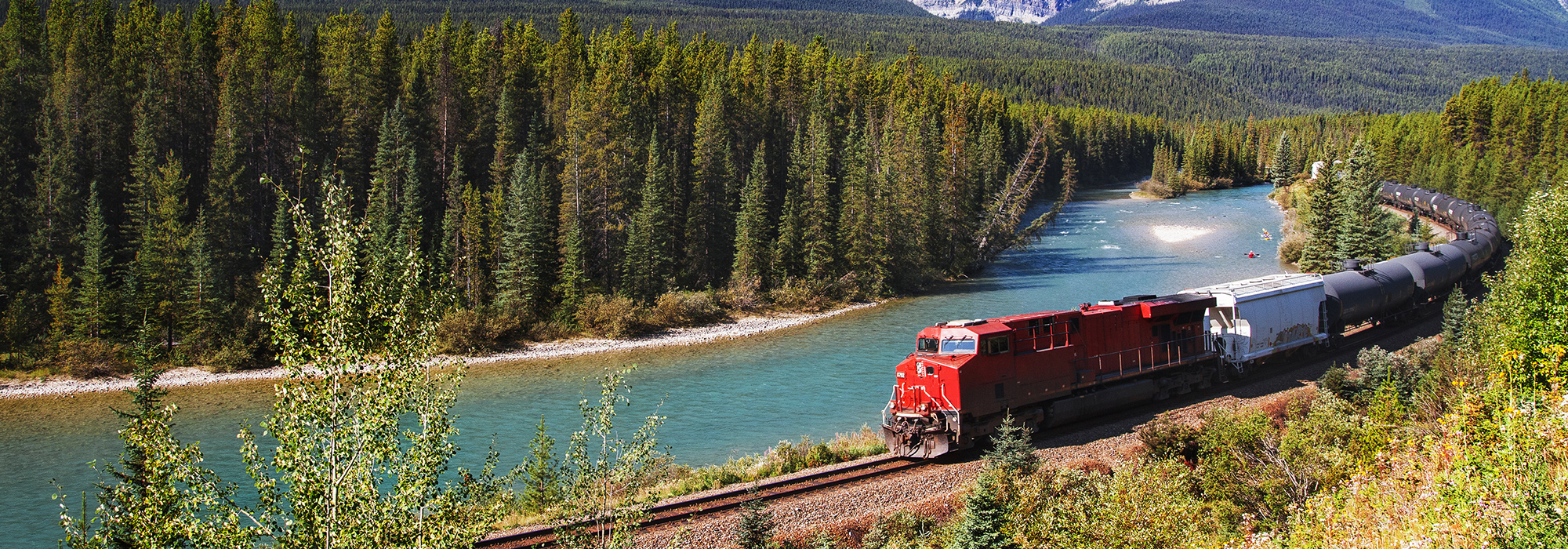
Canada is currently undergoing a formal review of the Canada Transportation Act, which became law on July 1, 1996. This Act contained a statutory requirement that a review take place no later than four years after enactment. The review is being conducted by a five-member panel appointed by the Minister of Transport that is required to report to the Minister with the results of their review, including any recommendations for changes in transportation legislation and regulation, by June 30th.
While the panel’s mandate is wide open, the Minister specifically asked it to “consider proposals for enhancing competition in the railway, including enhanced running rights, regional railways and other access concepts.” The panel will consider all modes of transportation, but producers and shippers are focused on the rail mode. For us, the principal issue is rail competition and how to enhanced it.
Over the past 50 years Canada has become a major exporter. We currently export more than 40 per cent of our GDP. A large percentage of Canadian exports are resource commodities, including coal, potash, sulphur, ores and concentrates, grain and agricultural products, chemicals, forest products, petroleum products, minerals, and fertilizers. These commodities typically move in large tonnages over long distances to tidewater ports or to markets in the United States, and they are relatively low in value compared to manufactured goods. Their large volumes, low values and great distances to markets generally render resource commodities captive to the rail mode of transportation. They constitute about 50 per cent of railway revenues and a much higher percentage of their total tonnage.
Many commodities are captive, not only to the rail mode, but to just one rail carrier. Coal, for example, is produced in the more remote areas of Canada from mines where annual tonnage is typically two million tonnes per annum or more, and transport distances to port for export average 1,100 km. Values for coal are well under $100/tonne FOB (free on board) at the port, while transportation costs can vary from 30 to 50 per cent of FOB values at the plant or mine. Transportation is the largest cost for coal after production, and this is typical for resource commodities across Canada. Transportation costs are therefore a very important element in the competitiveness of resource commodities.
Canadian railways compete aggressively for higher-value manufactured goods moving between big cities, where their principal competition is trucking. The intense competition in this sector of their business has put significant pressures on railway earnings. As a result, they have become much more efficient and cost-effective in their operations. They have also increasingly looked to their resource commodity traffic, which is largely captive, to make up lost revenues and profits from their intermodal traffic.
Resource commodity producers in Canada sell in a highly competitive international marketplace where, in real terms, the long-term trend for commodity prices has been downward. In the past, these producers might have been able to afford the higher transportation costs of a monopolistic transportation system, but that is no longer true. For many resource commodities, including coal, competitive rail costs are crucial to long-term survival.
The Canadian economic model has been built largely on the concept of competition and market forces; and for many years now governments have been moving steadily toward deregulation, particularly in the service sector. They have introduced competition to telecommunications companies, pipelines and electricity transmission by finding ways to allow third-party access to the host facilities on the basis of fair compensation to the host entity for this use. Governments have done this because of the economic benefits to consumers and the country as a whole, and also because there were no practical alternatives for obtaining the benefits of competition and increased efficiency.
Because of their unique historical position as a key element in nation-building Canada’s railways have largely been sheltered from this process. However, legislative changes since 1967 have gradually freed the railways from economic regulation, and they have slowly transformed themselves from regulated utilities to private sector, stakeholder-driven enterprises with significant freedom to make market, service and price choices, just like any other private-sector business. Particularly since the Canada Transportation Act of 1996, change has been aimed at facilitating the privatization of Canadian National Railways. The result for shippers has been to bring into much sharper focus the railways’ monopoly position in much of their business.
The principal issue in the current Canadian Transportation Act Review is competition. The railways, through strong management, have made great strides in increased efficiencies and lower costs in recent years, but the benefits have gone largely to their shareholders. Any benefits their producer-customers have enjoyed as a result of increased efficiency and lower costs, have, in the very competitive marketplaces in which these customers operate, had to be passed on to their own customers. Few resource commodity producers have seen profitability similar to what the railways have enjoyed in the past five to ten years.
In their submissions to and appearances before the review panel, producers and shippers have argued very strongly that the Canadian rail system must become much more of an “open access” system that allows opportunities for real competition to develop, whether from shippers or third parties.
Shippers recognize that it would not be practical or economic to duplicate the existing rail structure, so, to the extent possible, competition has to be introduced in other ways on the existing infrastructure. The telecommunications model is a good example of how this might be done. Third parties were allowed to access telco facilities to compete on long-distance services, so long as they paid a fee to the host telco that represented fair compensation. In this way, competition has been introduced across Canada and the telcos have continued to flourish despite having to compete. At the same time, they have become much more efficient and competitive.
Shippers propose a similar approach for railways. For many years there has been a “running rights” provision in the Canada Transportation Act that allows just such compensated use of the infrastructure. But the privilege of exercising such running rights is currently limited to federally-licensed railway companies 35. This provision needs to be broadened to include any third party that can demonstrate it has the expertise and resources necessary to provide railway services safely and efficiently. In this manner, larger shippers or interested third parties such as “shortline” railroads (which are small rail carriers) could consider running trains on existing tracks while paying a fair compensation fee to the host railway. This would introduce a new level of rail competition.
Canada’s major railways naturally offer many arguments as to why this is impractical, but the fact is that there are many examples of operators exercising running rights perfectly safely and very effectively without detriment to the system. Via Rail and the Rocky Mountaineer, two passenger services that use CN and CP tracks, are obvious examples. For that matter, CN and CP exercise running rights provisions on each other’s lines in Canada and the US.
To meet the needs of smaller shippers who are currently unable to consider using running rights to combat excessive rail costs, shippers have recommended a method of mandated freight rates, based on an average of existing rates, to move traffic from a production facility located on one rail line to a point of interchange where that line connects with another rail carrier. The idea is that that the rail carrier operating the connecting line will be interested in competing for this traffic once it can be accessed economically.
A third change that shippers support strongly is not so much a competitive device as a defence against overly aggressive rail pricing actions. This is “final offer arbitration” (FOA), which has been available under the Act since 1987 but was amended in 2000 to make it more practicable for smaller shippers and fairer to both parties. The railways dislike the FOA process even though it treats both parties to a dispute similarly and encourages them to be reasonable in their negotiations by having the arbitrator choose between the two final offers.
The railways argue that their operations are already highly competitive and that there is therefore no need for any changes in the rules. Market forces will keep their prices down. While it is certainly true that railways do sometimes respond to market conditions, in a captive market it is their perception of these conditions that rules. While they may establish freight rates that do just allow a commodity to continue to move, their prices are often a disincentive to reinvest in the plant or mine involved.
The only real long-term solution is to find ways to have direct rail competition on the Canadian system so that genuine head-to-head competition sets transportation prices and levels and quality of service. Direct competition would have the added benefit of continuing to force efficiencies into the system and thereby continuing to lower costs. For the Canadian resource sector, this is essential for long-term survival.
In his 1998/99 review of the grain transportation sector, Justice Willard Estey recognized that railways in many areas of Canada do not compete, and that competition was essential. Further, he recognized that running rights were a key element in introducing competition where none currently exists. His views are consistent with the actions that other countries around the world are taking to make their rail systems more competitive and efficient. Australia, England, Sweden and others have all taken initiatives in this direction.
In order to implement the intent of the Estey Report, my company recommends that the following very specific changes be made to the Canada Transportation Act 1996:
- In section 138(1) the term “any person” should be substituted for the present term “a railway company.” This would allow anyone who could demonstrate they were fit, willing and able to do so to acquire running rights on existing track.
- Section 138(2) be amended to provide that “any railway opposing a running rights application must be required to establish that granting the remedy would not be in the public interest.” This reverses the current burden of proof. At the moment, applicants have to show their proposal would be in the public interest. The right way of doing it would be for track-owners to show that granting rights in a particular case would be inimical to the public interest.
- Section 138(3) should be amended to state that, in the event the parties are unable to agree on compensation for services rendered, the Canadian Transportation Agency will by order determine the compensation, recognizing that running rights are a pro-competitive measure. This would prevent the owners of the infrastructure from stonewalling.
- Running rights should be extended to provincial railways. There is no good reason not to, provided they can show they are fit, willing and able to provide services. Any person utilizing running rights must meet the safety requirements and all reasonable operating conditions imposed upon it by the railway whose lines are being used.
- There should be no requirement that the operator become a federal railway company.
- A federal railway which transfers a rail line subject to the federal laws for doing so should be precluded from demanding an agreement that the acquirer will not utilize running rights over the rail lines of the transferring railway company. Any such agreement is obviously anti-competitive and shouldn’t be allowed.
Competitive line rates (CLRs), the rates charged for transport to an interconnection, have generally not worked, for the reasons explained earlier. They are a form of extended interswitching and, if they did work, could be a good competitive device for some shippers. CLR’s can work if the regulations are changed as follows:
- Section 131(1) of the Canadian Transportation Act 1996 should be removed. This section precludes the establishment of a CLR unless the shipper has an agreement with a connecting carrier.
- A new Section 131(1)(a) should be added to the effect that “in the event that a connecting carrier refuses to provide to the shipper rates, terms and conditions for the continuing movement of the traffic, the shipper may apply to the Agency to have rates, terms and conditions established for the continuing movement of the traffic from the interchange point. The Agency, upon application, will establish the rates, terms and conditions” subject to established rules.
- A new Section 131(1)(b) should be added: “In the event that the connecting carrier provides to the shipper rates, terms and conditions that are unacceptable to the shipper, the shipper may apply to the Agency to have the offered rates, terms and conditions reviewed to determine if they are commercially fair and reasonable considering the criteria set out [elsewhere in the Act]. Should the connecting carrier’s rates, terms and conditions provided not generally meet the criteria in the judgement of the Agency, the Agency will establish the governing rates, terms and conditions.”
Shippers also support the idea of a regional rail carrier, which is currently being promoted by one of the existing short-line carriers, OmniTrax, as a way of adding competition in the rail sector. My company supports the concept and believes a regional carrier could provide rail services in places that shareholder-driven mega-railways may not wish to serve. Two key elements in developing the potential for regional railways are access to running rights over main-line carriers’ tracks and the precluding of anti-competitive features in agreements between Canada’s national railways and short-line operators.
If all three of these policy thrusts are accepted and acted upon, Canada would still not have an ideal competitive environment in rail. These are the best devices available in the circumstances, but would still leave the national railroads considerable market power against captive rail shippers. It is also important to understand that running rights, competitive line rates, extended interswitching and final offer arbitration are a package. Unless they are accepted as a package, they cannot increase competition throughout the industry. Not all shippers could avail themselves of each. Larger shippers might consider running rights but CLRs would be of little help to them. The reverse would be true for smaller shippers. Extended interswitching, which is already a feature of the Act, is only available to the few shippers located within 30 kilometres of another rail carrier. For its part, final offer arbitration, even in its improved version, is an expensive, high-stakes and complex process that many shippers feel they can’t use. To leave out any of these proposed changes is to leave an important group of captive shippers unprotected.
Photo: Shutterstock







